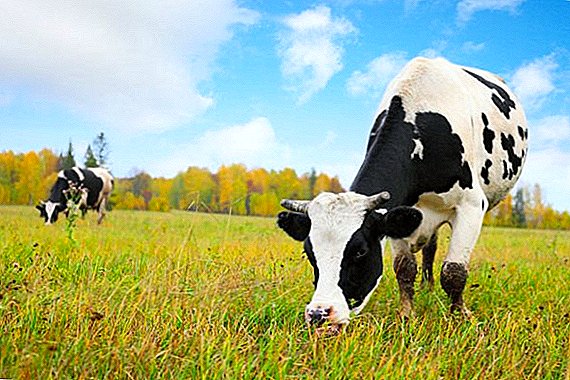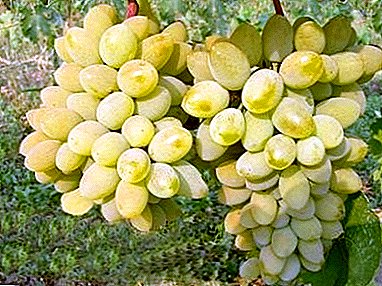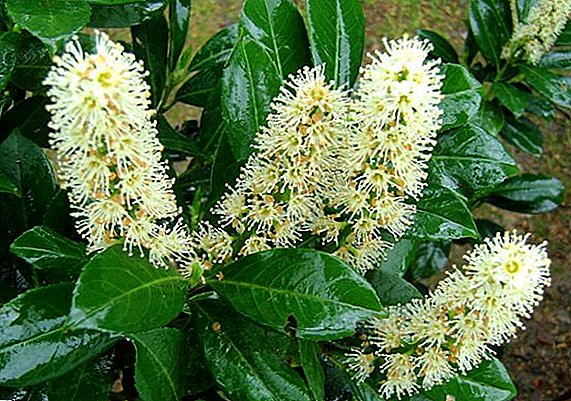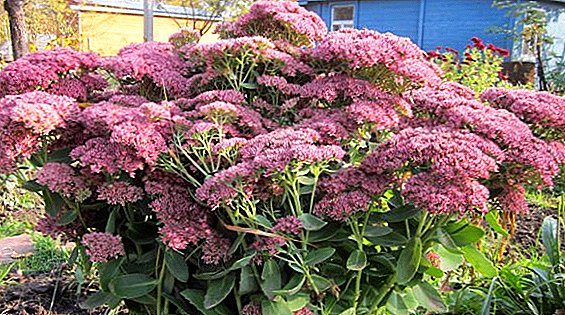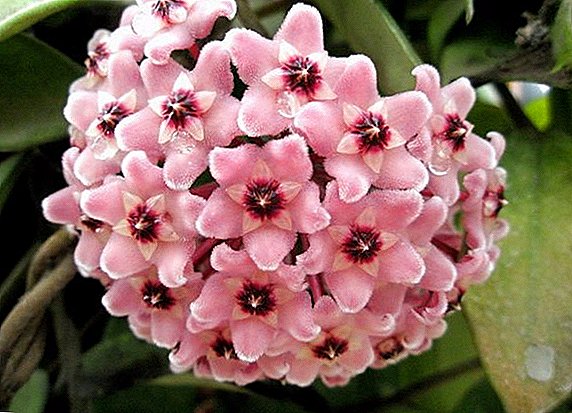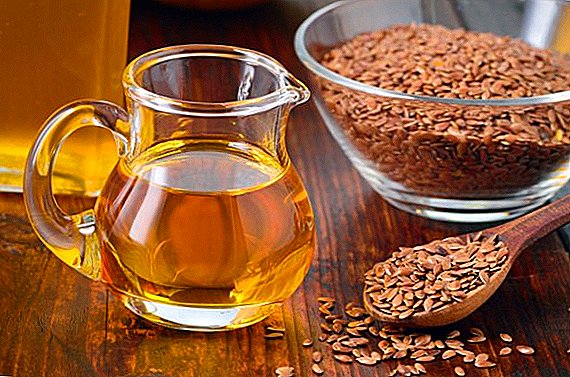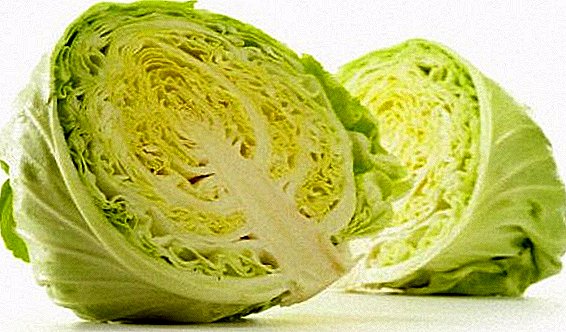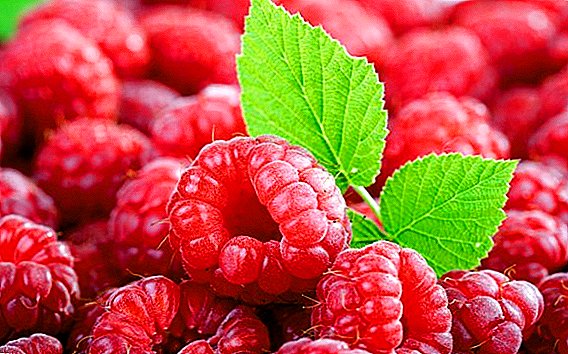 Raspberry Hercules - a work of horticultural art. The gardener's dream come true - large ruby-red berries, fruiting in the year of planting, an impressive harvest, even frosts, and all this without any special tricks and worries.
Raspberry Hercules - a work of horticultural art. The gardener's dream come true - large ruby-red berries, fruiting in the year of planting, an impressive harvest, even frosts, and all this without any special tricks and worries.
Did you know? The peculiarity of the remontant (from Fr. Remontant - to rise, re-bloom) raspberries - to bear fruit twice a year. The repair raspberry Hercules was created in the village. Kokino of the Bryansk region (this is where the Research Institute and the world's largest fund of raspberry hybrid varieties are located) I. Kazakov and S. Evdokimenko by crossing varieties Ottom Bliz and 14-205-4.
Strengths and weaknesses of the variety
To decide on the breeding of raspberry Hercules in his area can by comparing the advantages and disadvantages of this variety.
The advantages include:
- productivity and large-fruited raspberry Hercules. One bush gives a crop - up to 10 kg. The size of the berries is impressive - from 10 to 15 g;
- the opportunity to get 2 crops per year (on young shoots and last year’s);
- precociousness (good harvest guaranteed in the year of planting);
- berries have a high density (an important indicator for transportation);
- commercial attractiveness (aging occurs before frost, when other raspberry varieties have already grown, and raspberry prices have risen);
- unpretentiousness (does not require special conditions, complex and abundant fertilizing, tolerates our climatic features);
- high resistance to diseases (gray mold, fungal diseases, etc.), pests (due to the mismatch of developmental phenophases);
- medium frost resistance (high - when pruning the aerial part of the bush);
- ecological purity (there is no need to use chemistry);
- simple care (no need to thin out due to the weak formation of shoots, tie up and construct trellis, bend down shoots and cover them for the winter).

Raspberry remontant Heracles has the disadvantages:
- berries have a sweet and sour taste. This disadvantage is quite conditional (someone likes sweetness, and someone more like sourish taste). Experts estimate the taste of raspberry Hercules at 4 points out of 5. The berries have a clean raspberry pleasant flavor;
- shoots covered with numerous thorns;
- a small number of seedlings (important for those who plant shoots for sale);
- before the start of frost, not all berries have time to ripen.
Did you know? Unripe berries of the repair raspberry Hercules are able to ripen (blush), if the cut branch is put into the water.
Even a cursory comparison of the pros and cons leads to the conclusion: dilution of the remontant raspberry Hercules will meet your expectations.
Proper fit is essential for good growth.
High yields, taste characteristics of berries, the viability of the bush is largely dependent on the correct selection of seedlings, the site for planting, soil preparation.
How to choose the seedlings for planting
Before you dissolve the raspberries in the garden, you need to buy quality seedlings (preferably from a trusted seller or in a specialized store or nursery). When buying seedlings, pay attention to:
- the roots (no damage, dry fragments, mold or rot. They should not be sluggish, but dense, flexible, resilient and wet). The root can be packaged. If the packaging is made of polyethylene, then the roots may become overwetted, it is better if the packaging is made of cloth;
- stem (a formed stalk indicates that the sapling is alive; when planted, it will be cut to 25 cm).

Important! The roots of raspberry seedlings do not tolerate drainage, die quickly. To transport a seedling, it is better to wrap its roots with a wet cloth.
How to choose a site for landing
Raspberry Hercules loves sunlight and heat, does not tolerate dampness and drafts: where there is more sun and heat on the plot - it’s better to plant a repair raspberry (especially if there is wind protection near - a house wall or fence).
When choosing a place, you need to remember that raspberries in a few years deplete the soil and yield decreases (“soil fatigue”) - every 4 - 5 years the earth needs rest (sow with clover or legumes). Raspberries are not recommended to plant there:
- where previous cultures are solanaceous (potatoes, eggplants, tomatoes, peppers);
- where close groundwater;
- where they grew raspberries (less than 5 years have passed).

Did you know? Raspberry berries contain beta-sitosterol, which prevents the deposition of cholesterol on the walls of blood vessels, has a hematopoietic effect, helps in the prevention of leukemia.
How to prepare the soil before planting
Raspberry Hercules will grow on any soil, but best of all - loose and fertile (remontant raspberry feels the need for fertilizers in 2 times the usual raspberry).
Planting and caring for the remontan raspberry involves the preliminary preparation of the soil for seedlings. Preparing the soil for planting can be 2 main ways - gradual and urgent.
Gradual training can last up to two years:
- the first fertilizer during the digging (per 1 sq. m. - up to 3 buckets of humus, red peat, a glass of complex fertilizers ("Stimulus", "Kemira wagon", "Growth" or superphosphate);
- planting vegetables;
- a year before planting raspberries - planting siderora crops (mustard, lupine, clover), which then heals and fertilizes the soil while plowing;
- clearing of weeds and pre-planting digging (on two bayonets) with deep laying of organic fertilizers.

- the plot is cleared of weeds and dug up;
- trenches are dug out (depth and width from 50 to 60 cm);
- fertilizers are laid (per 1 m of length - a mixture of 25 g of potassium sulfate, 15 g of superphosphate, 12 kg of humus and soil);
- a month later, fertilizer was again laid in the trench. A glass of potassium sulfate, a glass of superphosphate, 4 glasses of wood ash are brought in per meter, and seedlings are planted.
Stepwise landing process
Planting raspberry Hercules is made in pre-prepared trench along the south-north line. The length depends on the number of seedlings. It is calculated on the basis of the fact that the plants must be at a distance of at least one meter from each other and up to 2 m between rows (they will not close the light to each other).
Planting of saplings of a repair raspberry is made in the fall and in the spring.
 The optimal time for planting a repair raspberry in autumn is October-November. An earlier planting is undesirable due to the late biorhythms of the raspberry Hercules (growth of roots, the outflow of nutrients in them is completed by October).
The optimal time for planting a repair raspberry in autumn is October-November. An earlier planting is undesirable due to the late biorhythms of the raspberry Hercules (growth of roots, the outflow of nutrients in them is completed by October).
Planting is done in the following order:
- at the bottom of the trench to make a mixture of compost, manure, soil, ash (10 cm);
- to form at the bottom of the trench small mounds for seedlings;
- roots of seedlings dip in clay solution;
- place the seedling on the hill and cover it with soil (the root neck should be flush with the soil surface. If it goes deeper, development slows down, scions appear early, if it is higher, there is a threat of death from heat or frost);
- water a seedling (1-2 buckets);
- loosen and compost the soil around the planted plants.
Important! The nutrient mixture, embedded in the soil immediately before planting (organic, nitrogen-mineral complex), lasts for a period of up to 3 years. However, experienced gardeners are advised to make nitrogen for better growth and yield every spring.Before you plant a repair raspberry in the spring - before the beginning of the growing season, you need to wait until the last frost stops. The landing procedure is similar.
Practice shows that it is better to use seedlings with a closed root system (in peat pots, containers, etc.). In this case, the development will go faster, and after 3 months the bush will bear fruit. Planting such seedlings can be made in the summer. 
Competent care - the key to a good harvest
Information on how to grow remontant raspberries, will help to properly care for her. Raspberry care Hercules - regular loosening of the soil, weeding, watering and feeding.
How to care for the soil
After planting, further soil care includes:
- regular (once every 2 weeks) loosening of the soil (with a depth of 6-7 cm);
- periodic mulching of the root zone (with a mixture of cow or horse manure with straw);
- regular watering (especially when flowering and fruiting - 2-4 buckets of water per bush)
- regular foliar and root dressings.
Important! Raspberry remontant type prefers loose, well-fertilized soil with good drainage.
 In the first half of summer, the site is fertilized once every 2-3 weeks with alternating nitrogen and organic fertilizers. Not bad fertilize liquid dressing (bird droppings or mulleys mixed with water).
In the first half of summer, the site is fertilized once every 2-3 weeks with alternating nitrogen and organic fertilizers. Not bad fertilize liquid dressing (bird droppings or mulleys mixed with water).In the second half of the summer it is desirable to use complex fertilizers (with the content of potassium, trace elements, phosphorus). In the autumn - humus, peat with the addition of urea and ammonium nitrate.
Bushes garter - do you need it
Medium-erect raspberry bushes Hercules have thick and strong stems that can withstand the load of berries, and there is no need for garter bushes to the trellis. You can plant bushes in two rows (in areas where strong winds are frequent) - the stems will lean against each other.
Harvesting and storage
Harvesting the raspberry remontier Hercules lasts until November. You need to pick berries in dry weather. You can not keep the collected raspberries in the sun.
Important! To preserve the presentation of the raspberry when picking the berries are broken together with the stem. In need of transportation - follows remove berries 4 to 5 days ahead of time (they will reach during storage).
Fresh berries are stored in the refrigerator for up to 5-7 days. It is necessary to sort them out - to remove wet, crushed or with mold. Place in a glass dish in one row or cover with a cloth (raspberries easily absorb other smells).
 For longer storage raspberry subject:
For longer storage raspberry subject:
- freezing (before that, you need to decompose the berries in a single layer, after freezing pour in a bag. Stored for 2 months);
- drying;
- rub with sugar.
Did you know? To prolong the fruiting period with the onset of small frosts, raspberry bushes can be covered with foil. This will allow the berries to ripen for another 2 to 3 weeks.
When and how to prune bushes
Proper pruning of raspberries in the fall will ensure the harvest for next year, move the fruiting period forward. Pruning allows you to make the transition from a two-year to a one-year plant development cycle.
Experienced gardeners recommend cutting off the entire above-ground part of all stems after fruiting. In the spring will go new shoots that will give a good harvest. As a result, remontant raspberry will switch to a one-year cycle of growth and fruiting. This is beneficial because:
- in winter the plant will not freeze;
- in the fall, many pests weaken, and the laid eggs on the shoots of the current year will die along with the trimmed stems;
- pruning remontany raspberries as ordinary (dried top shoots) will lead to the degeneration of the variety and decrease in yield - old shoots will pull all the juices;
- there will be no early harvest of raspberries, but the autumn harvest (from August to November) will be more abundant.

Important! It is much more profitable to grow remontant raspberries as an annual crop and get only a late summer - early autumn crop (the first crop on two-year-old stems is small. It weakens the plant, retards the ripening of the second, more valuable crop).
You can cut off after the first snow falls (the roots still received nutrients). All cut branches burn.
In September, standard pruning can be carried out (cutting branches and leaving hemp 40 cm each). Then you will get 30% of the harvest in June, 70% - in August.
If in early spring the central part is removed in a diameter of 10–15 cm of a two to three-year-old plant, 15-20 seedlings will be developed from the remaining roots.
In the formation of ovaries, some of them are best removed to get rid of thickening. Gardeners advised when pruning to get rid of all the shoots thinner than a pencil.
How to prepare for winter
At the end of October, the last fertilization of the soil with organic matter (manure) is carried out - this will provide a spring “start” to the raspberry. Nitrogen fertilizers are contraindicated before winter (metabolism will not have time to complete, frost resistance will decrease).
 When pruning the stems, the problem of shelter disappears - the roots go through the ground well in the ground even without snow (you can mulch the soil with sawdust and leaves in a layer of 5-6 cm). 1-2 weeks before the constant frosts need to be watered (2 - 3 buckets per bush) to have enough moisture for the winter.
When pruning the stems, the problem of shelter disappears - the roots go through the ground well in the ground even without snow (you can mulch the soil with sawdust and leaves in a layer of 5-6 cm). 1-2 weeks before the constant frosts need to be watered (2 - 3 buckets per bush) to have enough moisture for the winter.
With the observance of simple rules for care, the remontant raspberry Hercules will bring a bountiful harvest of beautiful berries and will delight the gardener with a beautiful view of his bushes.


